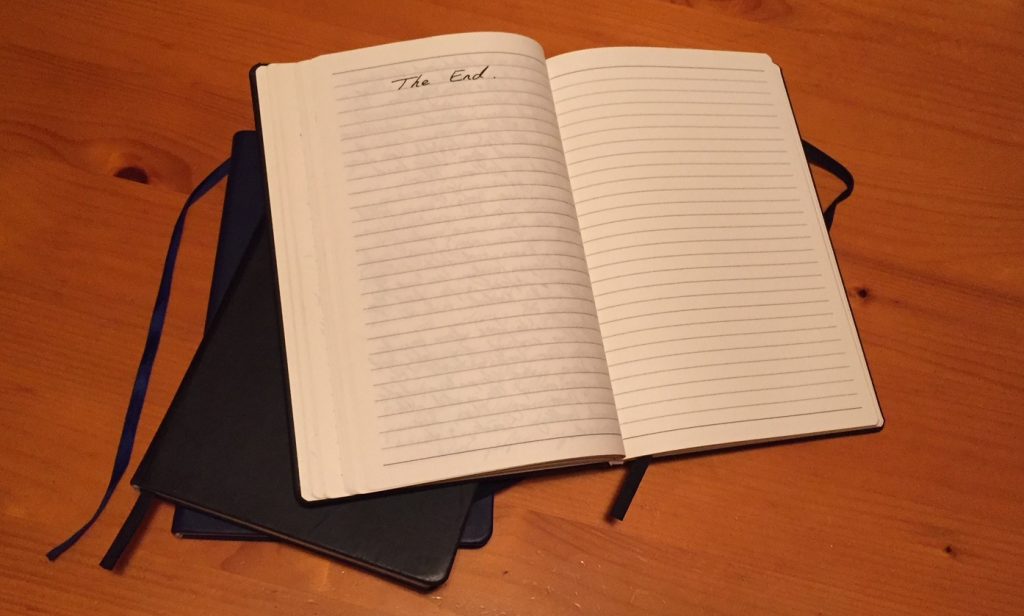(Part 1 in an occasional series of rambling blogs from an amateur author)
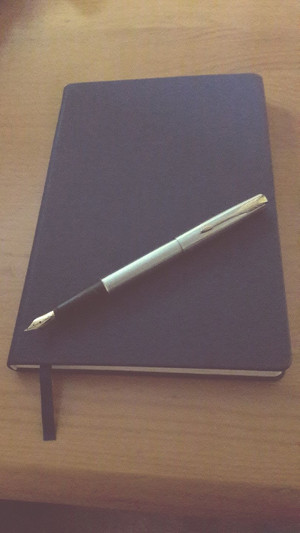
Introduction
This article may seem a bit self-indulgent from someone who’s not yet published, but one of the things I’m asked most often is: “I’d love to write, but where do I get ideas from?” This is usually from people who I know have more than enough skill and capability to create a novel. And they do have a smattering of ideas (however thin).
So, this is an attempt to explain how I go about writing my books. And please note, this is the way I go about things; it is far from being the only way, and won’t be the best approach for everyone. There’s plenty of advice out there if you browse around, but there’s one important thing… Pick up that pen / keyboard and start writing.
By way of disclaimer, I now have six books fully written and on the road to publication, with two on the way to completion (and four others ‘storyboarded’). At least in terms of getting together ideas for your story I can hopefully offer some tips.
It’s all about the story
Hmm, where to begin…?
“Once upon a time a man had an idea for a book. He wrote it up, got it published, and everyone lived happily ever after.“
Except that never happened, not to anyone, ever. There’s a lot more work to it than that! I’m assuming you already have some idea of what type of story you want to create, even if at this stage it’s only the vaguest of ideas.
When I start to create a story, it is firstly about scenes. I come up with a minimum of three scenes, reflecting the typical story arc of a beginning, a middle(s), and an end. And when I say ‘scene’, what that is can very hugely. Maybe the scene is almost a still, with someone traversing a landscape; maybe it’s people having a particularly significant conversation; maybe it’s a piece of action such as a chase, a battle, a car crash. with lots going on. Whatever, it should be something important to the story.

The first scene can be the most important, for it (often) determines the type of story you are telling, sets the tone, and establishes some of the key characters. But then, the end scene is almost as important, because it helps you think about what your are driving towards. You may well come up with a multitude of ‘middle’ scenes, and that’s fine. Some of those scenes may present key events, others may just help to portray the world and its people.
I always craft the opening scene first, meeting the key characters just as a readers would; but this is your story, that might not work for you. Perhaps you’ve a grand finale in mind, and you need to work backwards from there. Maybe your story takes a dramatic swing mid-way, and that crux point is what you want to flesh out first.
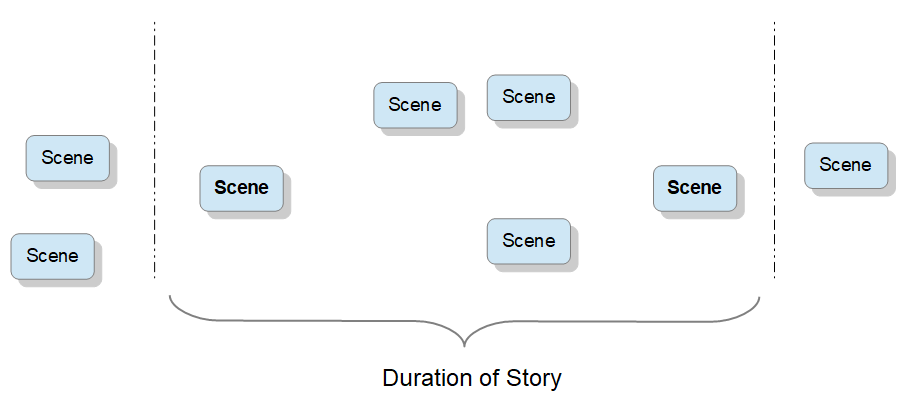
Whatever way you take, you end up with a number of scenes, in some sort of rough order. Remember, you are not fixing anything in stone. This is your story. As you write you can create everything out more. Maybe some scenes won’t even appear in the final story; perhaps the ending scene changes completely from your original idea! At this stage all these scenes are just a hook to get you going.
Details in a scene
For all your scenes ask yourself the following…
- What is the setting (time and place)?
- What has just happened and what is happening?
- Who is present and who are they (and what is their role)?
- How did they get to the situation they are in?
- What are they doing and what do they want and what do they plan next?
Here’s a slightly different way of thinking about it: You’ve got a blank stage and you need to fill it. Things have happened before your characters come onto the stage, and things will happen to them when they leave it.
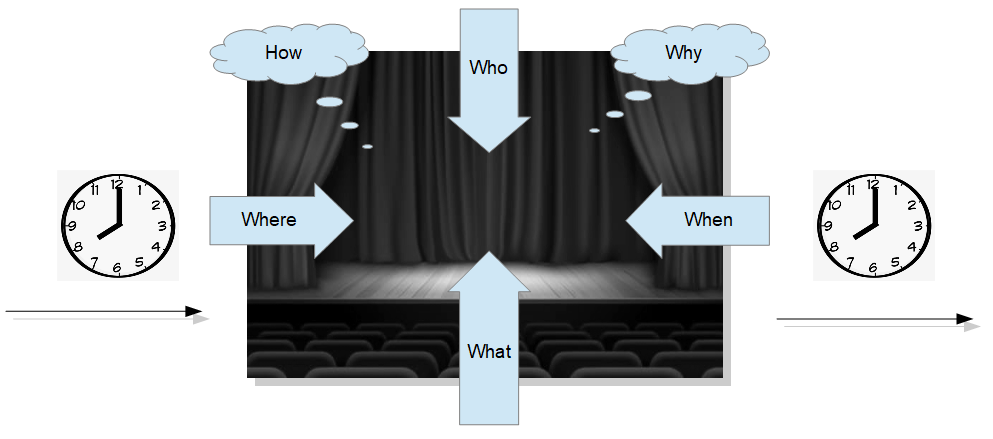
Once you know all the above and more about each scene you are well on the way to crafting your story. There’s more work in store but we’ll deal with that later.
Now, the whole point of a scene is not about answering a mass of facts, it is about creating a setting you and the reader can imagine stepping into. Open your eyes and look around. What does it feel like? What can see about you? What do the people’s voices sound like? I find the more connected I am to the scene the easier it is to write the story.
But how do I come up with a scene?
That much I can’t tell you – that is down to your own imagination and inspiration. After all, writing is not a mathematical formula! Maybe the following – very different – pointers will help.
- Do you already know in general what type of story you want to tell? “It’s about a person called a, who meets b, and they want to x, but the end result is y“. Start by thinking about that. For instance: how did they meet, what was special about it, where was it? Bingo! There’s one of your scenes.
- Are you’re doing a historical story? You should have a feel for the span of time you’re going to cover; so, what happens in the bigger world during this period? How does it affect your characters? There’s lots of research you can do to get a better picture of such settings and likely action.
- Perhaps your story is heavily focussed on one person and their life. In that case, think: What part of that person’s life will your story show? What are the key things that happens to them in this period? Could your first scene show them in a happy carefree life (cue ominous overtones), or maybe you want to start with some traumatic event?
- Inspiration is all around:.
- The person opposite you on the train: What’s their story? Are they on an important errand, not just a 9-5 commute?
- Take a place you know well: What unexpected events might happen there?
- That story on the news that interested you: Is that something you could research and develop into fiction?
- An old lady who stops and stares thoughtfully out to sea: What past events might she be dwelling on?
- How different might the world look if x happens rather than y?
To be honest, a range of different things have influenced each initial scene. So, for Sunset, books 1 and 2 were inspired by fleshing out a dream (perhaps a nightmare when you read it!) Books 3 and 4 were influenced by trips to Berlin and Belfast, placing history into the setting of other worlds. The Rescued Year very much emerged as my angry response to populism such as Brexit. Marquis of the Southern Vale is inspired by the heroic WW2 Shetland Bus operation; and Once Upon a Valley came about through thinking what a future-day fairy tale might look like.
It’s all about the people
With all those initial thoughts in place, it’s time to first think a bit more about the people. More about the story in the next section.
So, let’s bring in the cast. (There’s that stage comparison again!) You hopefully already have some characters from the scenes you’ve drafted, but maybe there’s others who haven’t featured yet. Just concentrate on the key characters at first, whether protagonists or antagonists, but that’s not to say others won’t become important.
Obviously there’s the basics you need to think about in a character – what’s their name, their age, their physical appearance? Is there anything unique about the way they move or speak, the way they dress? That should be easy. But think a bit more. There’s at least two more things you need to work on, unless you want your characters to end up resembling cardboard cut-outs.

Firstly, what is their history? What has happened to them up to the point where they appear in your story? I don’t mean what skills and abilities they bring with them, but their experiences; perhaps those influence how they behave. And as part of this – which should be critical – what are their desires, what do they want?
Secondly, what is their personality? That’s a whole range of things. Are they the sort of person who reacts to events or do they try to shape them? Do they tend to speak up or keep quiet? Do they trust others or regard them with suspicion? (Not forgetting their quirks, their likes and dislikes, and so on.)
That sounds like a lot of work… but I like to get to the point where I know the characters well enough that I can imagine how they would react in any given situation. So that I can imagine what it would be like to sit down and have a beer / coffee with them. (Granted, not every character may be someone you would want to converse with…!)
All this work may not end up on the page. But it will help you in your writing, and mean that you end up creating something that has more depth to it.
Starting to stitch it all together
OK. So by now you know your key characters. You know how your story starts and how it (maybe) ends, and have some way-points you think it will pass through on the way. Now it’s time to start gluing an outline of everything together. Make sure your scenes are in the right order, then ask yourself: How do the characters get from one scene to the other; what goes on in between? This is an important part of guiding your writing. Sometimes its obvious (to you at least!) how the story will flow from one scene to the next, but you may find you need to start planning extra scenes to fill in gaps! I’ve said it before… you’re not setting anything in stone. As you write you may well want to change things.
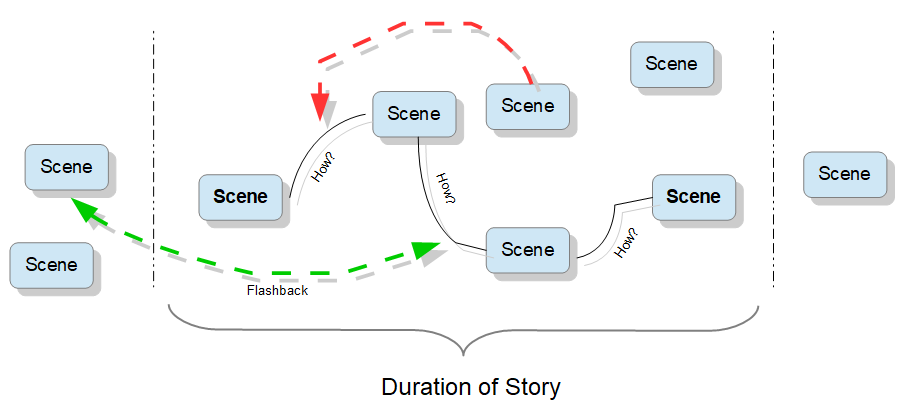
There’s a number of ways of how you do all this. You could be very organised and create a set of ‘storyboards‘ – essentially detailing not just the scenes you’ve already created, but each step in between. This way you know exactly what you’ll be writing about. Some storyboards can be quite detailed – listing events, people involved, key items of dialogue to cover, maybe even a visual ‘mock up’ of each board. You can use post-its, index cards, whatever you want. Some people may prefer a rougher guide in the shape of bullet points arranged into draft ‘chapters‘, picking out the key points for each of these chapters. Others want to may use logic maps or diagrams. Have a browse around, see what you think works best for you! That may change over time, and that’s OK.
For me – and this may not work best for you – I create a broad road map provided by the different scenes I’ve created, I keep a file with notes on characters and places, and then just start writing. There’s certain events highlighted that I need to ‘hit’ on that road map, things that are probably going to happen… But I also go with the flow in terms of how the characters are reacting to the world around them. So for example, part way through Once Upon a Valley I make a pretty big change to the story – I didn’t plan that, it’s just the way the characters led things.
It’s all about the setting
I’ve mentioned scenes and characters, but it’s also important that you think about where the story is located. This may be one place or a range of locations. It’s a lot easier to write your story if you know the details of where it is set. I said above you should be able to imagine sitting down for a chat with the key characters; equally, you should be able to imagine what it’s like to walk through your setting. There may be parts of the world you create that you don’t even visit in the story… but knowing they exist can help fix the places in your mind.
Maybe your story is set around a few households, in which case you will want to pay attention to a lot of the exteriors and interiors of buildings. (Really, they went with those curtains?). Perhaps your story revolves around a range of exotic locations, so you might concentrate on the stunning natural wonders, the glamour, maybe the seedy underbelly. And those of you writing Fantasy and Science Fiction may have the hardest task of all. This is not easy, you have to create whole worlds from scratch, which is not a task to be undertaken lightly. (Subject of a future blog!)
In some stories the setting may just the stage your characters walk through. But in some stories the setting itself forms an important component, as important to the story as your protagonist.
Sometimes a setting works best using somewhere you’re familiar with (if you can easily convey that to others), but by all means put in the effort to create somewhere new. Whichever way you go, you should be able to answer a number of things about the setting: What is its history? What smells are on the air? What does the ground beneath your feet feel like? What is any architecture like? Is it down at heel or elegant? And importantly… what is unique about this place? (Or, maybe its very averageness is a factor.)
Again, not all of this may end up making it onto the page. But it’s about you knowing it all so that you can just get on with writing the story.
Hints and tips
The above may all sound like a chore – but it’s not (or shouldn’t be)! This is often the ‘fun’ part of creating a story, where you’re free to flex your imagination. Sure, there is a lot of work involved, but it’s all good enjoyable stuff.
The following are a few random thoughts on creating a story which may help.
- When you’re at the very start, don’t be tempted to plunge into writing the whole thing just because you’ve thought up of one or two good sentences. Maybe some can do that, but you will almost certainly will hit a block a few paragraphs later when you’ve run out of that one idea! Scribble down what you’ve thought of for later reference. Then go back to finishing creating your key scenes / characters / settings for the story.
- Create cards which portray your key characters (electronic or hard copy, whichever you prefer). Describe the things highlighted above for characters, because at some point you will forget what makes each character unique.
- That particular bit of narrative or dialogue you thought of before – don’t forget about it, write it down! (Maybe use a scrapbook, maybe more organised as an electronic file, whatever works.) It could be something you can copy and paste in later, or something you end up using in a different story entirely.
- Keep anything that helps you plan out your settings – maybe photos of the actual place, or ones that just look like the town / building / mountain range you imagine. Perhaps you’ve done a rough sketch or drawn a map to help you understand the layout (highly recommended). Whatever it is, store it where you can find it!
- Look for software tools to help you, whether that’s just making sure you know all the tricks of your word processor or getting specialist writing software. I’ve used both y-Writer and Scrivener. Both can seem cumbersome at first, but once used to them I found them excellent tools to both plan and write stories.
- Above all, remember: this is your story, nothing is fixed. Add to your background notes as you go; make sure if you start writing a character or setting differently than what you initially planned that you update this. Too easy to make a mistake if you don’t!
And then, get writing! Once you’ve done the planning you feel you need, it’s time to start the hard graft. Imagination alone won’t get that book written. But the writing itself is perhaps a subject for a different blog…
Conclusion
So, to give you the short version…
- Know what type of story you are planning to write.
- Imagine the scene that will form the opening; fix it so that you can picture it clearly in your mind.
- Now do the same for your planned ending; and then for some mid-points.
- Make sure you know the order of the events in your story.
- Get to know your characters, listen to them as you write, see in which direction they take things.
- Go for a walk along the streets and hills of your setting; sit in the houses, try the local food.
- Don’t let yourself get tied down to what you planned; if your story needs it, change anything as you go along, be it characters, settings or events.
So, good luck! Above all, don’t forget to enjoy the whole process; you are creating something, you are a storyteller. Will you finish the task you have set yourself and become a writer?
